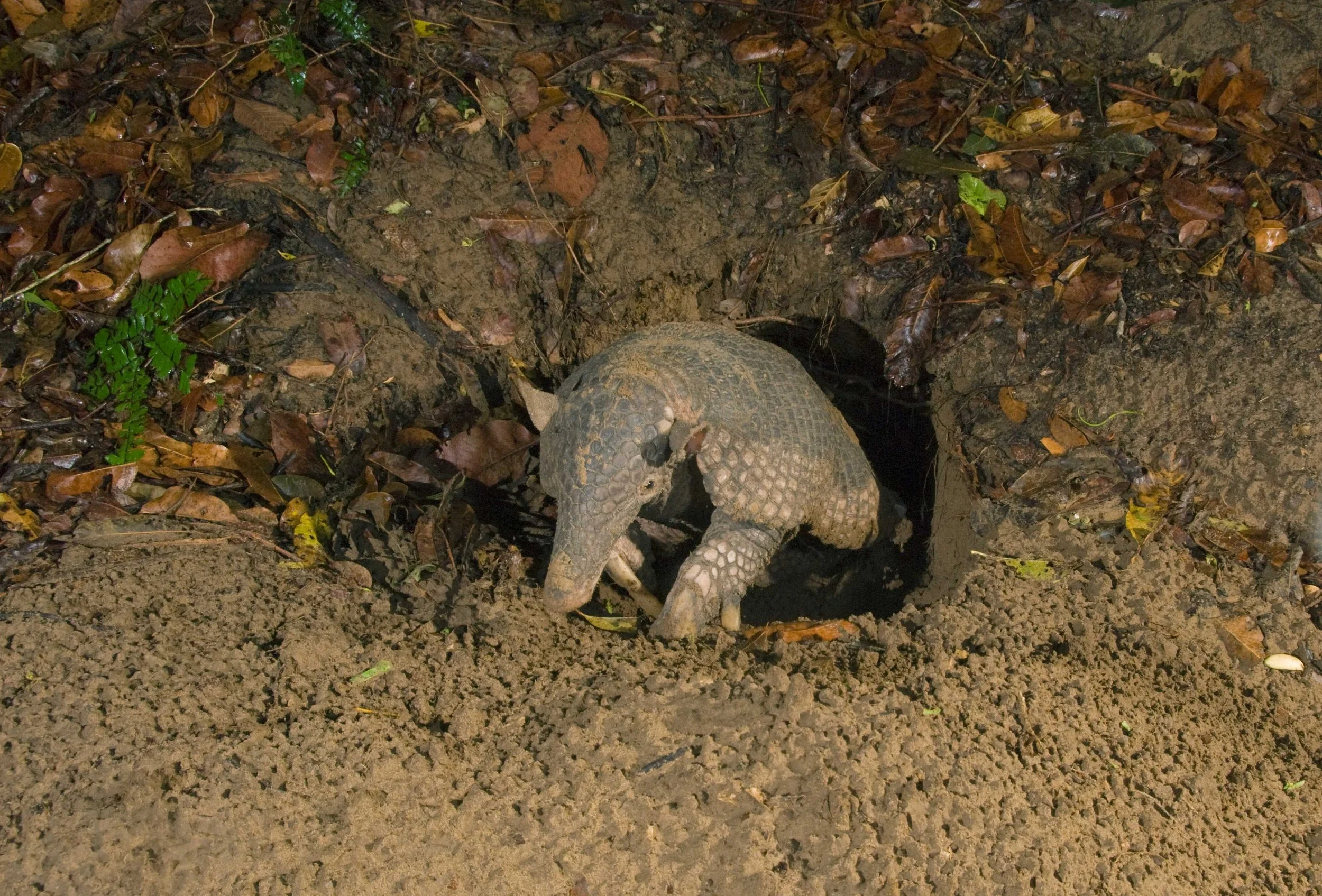Species Spotlight: Giant Armadillo
Photo Credits - Kevin Schafer
Species spotlight:
‘Giant Armadillo. It’s bout to get rillo. You better bump this song in your automobillo. Don’t try to eat her. Don’t try to harm her. Miss Thing is looking fierce with that horny armour.’ Wait, what?
Names & Nicknames: Giant Armadillo, Tatu-canastra, Tatou, Ocarro, Tatú Carreta
Size: These armoured units are the largest of the 21 species of armadillo. Usually, they get to a healthy 19-33kg in weight and 75-100cm in length (plus an extra 50cm for their tail!), but some VERY healthy Giant Armadillos can come in at over 50kg and 150cm in length.
Smell: Sweet, strong, and acrid.
Communication: Not a lot is known about how our elusive friends communicate, except that they prefer to stick to themselves, so they probably aren't communicating much. If they do, they probably use mainly smells, and mothers and their young probably communicate through touch as well. <3
Favourite Hangout: Giant Armadillos can be found throughout Northern and Central South America, especially in undisturbed forests, savannahs, and grasslands. They go mad for areas with easy-to-dig soil and some tasty nearby water sources to help beat the heat.
Favourite Snack: Giant Armadillos may eat a bunch of different critters such as spiders, worms, grubs, cockroaches, small snakes, carrion (dead meat) and even the very rare fruit, such as a fig. However, their absolute favourite thing to snack on is ants and termites, a bit like our pangolin friends.
Photo Credits - Kevin Schafer
Photo Credits - Kevin Schafer
Eating Habits: Giant Armadillos are nocturnal, meaning they come out at night to search for tasty snacks. When they find their favourite restaurant (an ant or termite nest), they use their large front claws to break in so they can feast. When we say large, we mean LARGE. The claw on their third forefinger can be over 20cm along the curve, making it the largest claw of any living mammal!
Toilet Humour: Science is a wonderful thing; there's even research on classifying armadillo poo - apparently it's classified as having a firm consistency and weak odour. Do what you will with that information.
Love Language: Little is known about the secret world of Giant Armadillo courtship, though it's likely to be a more straight-to-business affair, as being solitary, Giant Armadillos don’t really like spending time with each other.
If you see them: Give them a wide berth and observe from afar. They may be big, but they are softies really and would much rather be left in peace.
Red Flags: These friendly giants face a lot of threats that their tough scales, unfortunately, can’t protect them from. Some of the main ones are habitat loss, hunting by humans, vehicle collisions, and wildfires.
Epic Journeys: Giant armadillos like their space, and have very large home ranges, usually around 2,5000 hectares or more! They constantly roam around their ranges searching for tasty ants and termites, usually travelling a couple of kilometres daily.
Glow-up: A Giant Armadillo is a precious thing, and a lot of effort goes into raising one, much more than scientists initially thought! After a pregnancy period of around 5 months, a single baby Giant Armadillo is born. The mother will spend a long time caring for her young, who will only start foraging on their own after around 6 months, but may still live with the mother for over a year.
Facts: As a result of their impressive claw (see Eating Habits section), Giant Armadillos have to walk on the tip of their front claws. Werk it b!
Who are they in the friendship group: Someone who keeps up a hard front, but on the inside, they're a big softie.
Name:
Giant Armadillo
Habitat:
A wide range of tropical and subtropical environments across Northern and Central South America, including undisturbed forests, savannahs, and grasslands.
Diet:
Mostly ants and termites, but occasionally other invertebrates, small vertebrates, carrion (dead meat) and rarely even fruits such as figs.
Size:
Up to 54kg and 150cm in length
Behaviour:
Solitary and nocturnal
Predators:
Jaguars and Pumas
Lifespan:
12-15 years
Threats:
Habitat loss and fragmentation (mainly due to agriculture and development), hunting for meat, vehicle collisions, poaching for sale to animal collectors, conflict with beekeepers, pollution, and wildfires.
Conservation status:
Vulnerable
This desert rain frog is dead chuffed that you got to the bottom of this article. Who needs to know about the Giant Armadillo? Share this article.
Share article:
Read more: Species Spotlight | Drag









